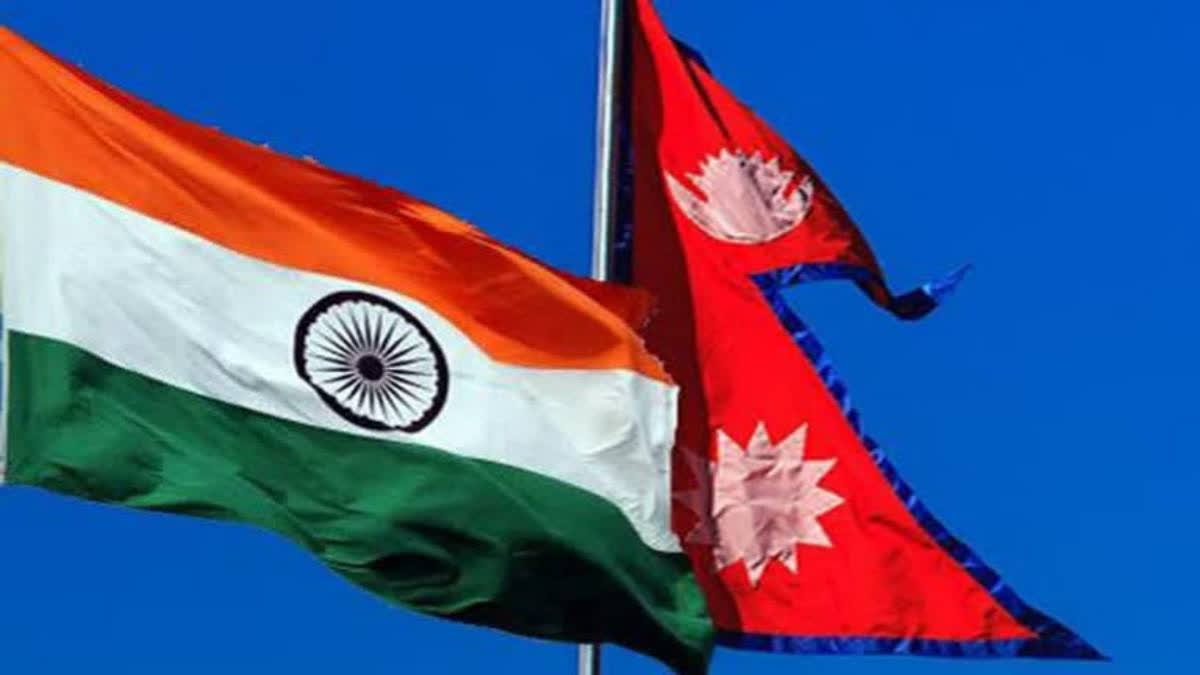New Delhi: With KP Sharma Oli of the Communist Party of Nepal-Unified Marxist Leninist (CPN-UML) assuming the office of Prime Minister of Nepal for the fourth time under a new coalition government formed in association with the Nepali Congress, focus will again be on how ties between New Delhi and Kathmandu will unfold.
Prime Minister Narendra Modi has welcomed Oli’s assumption of office saying that India looked forward to working closely to further strengthen the deep bonds of friendship with Nepal. “Congratulations @kpsharmaoli on your appointment as the Prime Minister of Nepal,” Modi posted on X (formerly Twitter). “Look forward to working closely to further strengthen the deep bonds of friendship between our two countries and to further expand our mutually beneficial cooperation for the progress and prosperity of our peoples. @PM_nepal_”.
But the fact of the matter is that despite India and Nepal sharing deep cultural, economic, development and people-to-people ties, the relationship between New Delhi and Kathmandu had kept fluctuating during Oli’s three previous stints as the Prime Minister given his tendency to tilt towards China.
Oli, 72, is noted for taking a more hardline stance with regard to the Indian government during and in the aftermath of the 2015 Nepal blockade. He strengthened relations with China as an alternative to Nepal’s traditional close trade ties with India and updated the map of Nepal by constitutional amendment, including territories disputed with India, for which he has received some domestic praise and a reputation as a nationalist. While in office, Oli was marred by controversy for frequent use of tongue-in-cheek remarks, hostility towards critics and the media, silence on corruption by colleagues and business aides, failure to deliver on economic growth and for deviating from promised budgetary expenditures despite a historic majority in the 2017 election.
What happened during Oli’s first term as Prime Minister?
Oli became the Prime Minister for the first time on October 11, 2015, succeeding Sushil Koirala. His ascent to the premiership came at a critical juncture for Nepal, as the country had adopted a new constitution in September 2015. He received 338 votes out of 597 members in the Legislature Parliament. Oli’s candidacy was supported by the Unified Communist Party of Nepal (Maoist), Rastriya Prajatantra Party Nepal and Madhesi Jana Adhikar Forum, along with 13 other small parties.
His government was immediately tasked with implementing the provisions of the new constitution, which included federal restructuring and addressing the demands of various ethnic groups. His first stint was dominated by the economic blockade imposed by India upon the promulgation of the constitution of Nepal. This blockade, coupled with internal protests from the Madhesi community in the Terai region, led to significant shortages of essential goods, including fuel and medicine. Oli’s handling of the blockade was marked by strong nationalistic rhetoric and a pivot towards China to mitigate the impact of the blockade. He took a defiant stance against India’s position to amend the constitution and signed trade and transit treaties with China to counter Indian dependence.
Following the withdrawal of support from the Communist Party of Nepal-Maoist Centre (CPN-Maoist Centre) on July 13, 2016, from the coalition government and subsequent registration of a no-confidence motion by the party on July 14, 2016, the CPN-UML–-led government and the Prime Minister Oli seemingly shrank into a minority, pressuring him to resign. However, CPN-UML decided to discuss the filed no-confidence motion in the House, which led to a three-day parliamentary meeting of the parties concerned. During the process, two other major parties, the Rastriya Prajatantra Party and Madhesi Jana Adhikar Forum, also withdrew their support from the coalition. On the third day, on July 24, 2016, after addressing the opposition parties in Parliament, Oli announced his resignation. On August 4, 2016, Oli formally handed over power to new Prime Minister Pushpa Kamal Dahal of the CPN-Maoist Centre.
How did India-Nepal ties fare during Oli’s second Prime Ministership?
Oli was appointed the Prime Minister for a second time on February 15, 2018, after his CPN-UML became the largest party in the House of Representatives following the 2017 legislative elections with support from the CPN-Maoist Centre, the same party whose withdrawal of support had led to resignation in his first term. He passed a motion of confidence on March 11, 2018, with 208 out of 268 votes in the 275-member House of Representatives. The Left alliance of the CPN-UML and CPN-Maoist Centre merged to form the Nepal Communist Party (NCP) on May 17, 2018, turning Oli’s coalition government into a majority and giving him a two-thirds majority in the House.
In May 2020, the Oli government unveiled new maps of the country, including the disputed territories of Kalapani, Lipulekh and Limpiyadhura in response to the inauguration of a road across the Lipulekh pass by the Indian government. This led to a “cartographic war” between the two South Asian neighbours. Oli’s government brought a constitutional amendment bill to amend the official map and emblem of the country in the Parliament, which was passed unanimously in both Houses before being authenticated by then-President Bidya Devi Bhandari.
Oli’s government launched ambitious development projects under the banner of “Prosperous Nepal, Happy Nepali”. Key initiatives included infrastructure projects like road construction, hydropower development and the completion of the Gautam Buddha International Airport in Lumbini and the Pokhara Regional International Airport. Both these airports were constructed by Chinese contractors.
Though Oli continued to strengthen ties with China, signing several agreements to enhance connectivity and trade, his government also worked on improving bilateral relations with India, culminating in visits to India and China to secure support for Nepal’s development agenda.
India provides substantial financial and technical assistance to Nepal for the implementation of large development and infrastructure and connectivity projects, as well as small development projects/high-impact community development projects in key areas of education, health, irrigation, rural infrastructure and livelihood development all across the country. A series of cross-border connectivity projects like rail links, roads and integrated check posts are under implementation with the Government of India’s grant assistance.
Despite his ambitious agenda, Oli faced criticism for slow progress on development projects and alleged corruption within his administration. Internal party disputes also began to surface, particularly between Oli and the leaders of the former Maoist faction of the NCP.
On December 20, 2020, Oli recommended the dissolution of the House of Representatives to President Bidya Devi Bhandari, who approved the decision. This move was widely criticised as unconstitutional and sparked protests across the country. The dissolution of Parliament was challenged in the Supreme Court. On February 23, 2021, the court ruled that the dissolution was unconstitutional and ordered the reinstatement of the House of Representatives.
Following the court’s decision, Oli was required to seek a vote of confidence in Parliament. On May 10, 2021, he lost this vote, failing to secure the required 136 votes in the 275-member House of Representatives.
How did Oli become Prime Minister for the third time and what were his challenges?
Despite losing the vote of confidence, Oli was reappointed as the Prime Minister for the third time on May 13, 2021, as the leader of the largest party in Parliament. However, unable to garner majority support, he again recommended dissolving the House of Representatives on May 21, 2021, which President Bhandari approved.
The second dissolution was also challenged in the Supreme Court. On July 12, 2021, the court once again ruled the dissolution unconstitutional and ordered the reinstatement of the House of Representatives.
Oli’s third term was heavily dominated by the COVID-19 pandemic. His government’s response included lockdowns, quarantine measures and efforts to secure vaccines. However, the response was widely criticised for poor management, inadequate healthcare infrastructure and corruption scandals related to the procurement of medical supplies.
The third term of Oli was also marred by intense political instability. Disputes within the NCP led to a split, with the Supreme Court ruling in March 2021 that the merger of CPN-UML and CPN-Maoist Centre was invalid, effectively reviving the two original parties. This decision led to further fragmentation and weakened Oli’s political standing.
Oli dissolved the House of Representatives twice during his third term, first in December 2020 and again in May 2021, both times citing a lack of cooperation and instability. Both dissolutions were met with widespread protests and legal challenges, with the Supreme Court reinstating the Parliament after each dissolution.
Oli’s third term ended on July 13, 2021, when the Supreme Court ordered his removal, citing his actions as unconstitutional. In the same ruling, the Supreme Court issued a mandamus order to appoint Nepali Congress leader Sher Bahadur Deuba as the new Prime Minister, based on the support he had garnered from opposition parties and dissenting members of Oli’s party.
What can be expected in Oli’s fourth term as far as foreign policy is concerned?
“This time, Oli’s government is backed by the Nepali Congress, a Liberal Democratic Party, and the two factions of the Madhesi-backed Janata Samajbadi Party,” Nihar R Nayak, a Research Fellow at the Manohar Parrikar Institute of Defence Studies and Analyses and an expert on issues about Nepal, told ETV Bharat. “The coalition government will mostly be busy correcting internal problems.”
Nayak pointed out that Nepal is faced with serious economic problems and Oli and the coalition government he is leading will mostly be busy addressing these issues. Due to the monsoon season, there have been heavy human casualties caused by landslides and floods. These, he said, will also keep the new government busy.
“The government will not be focusing on foreign policy as of now,” Nayak said. “At best, it will keep engaging with India and China for economic actions.”
At the same time, he said that implementation of Chinese President Xi Jinping’s pet Belt Road Initiative (BRI) in Nepal will also not make headway as both the CPN-UML and the Nepali Congress are against taking loans from Beijing for projects under this. The previous Leftist coalition government led by former Pushpa Kamal Dahal of the CPN-Maoist Centre had resumed talks with Beijing for the implementation of BRI projects in the Himalayan nation, something that would have gone against India’s interests.
Nayak also pointed out that Arzu Rana, wife of Nepali Congress president Deuba, has been appointed as Foreign Minister in Oli’s cabinet. “The Nepali Congress will work to checkmate any overstepping by Left political parties in conducting foreign policy,” Nayak said. “There will be no free hand in terms of foreign policy.”
Read more: Explained: Despite China Using Tourism Diplomacy, Here Is Why Indian Tourists Will Dominate Nepal



